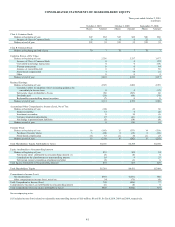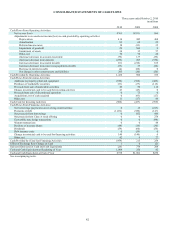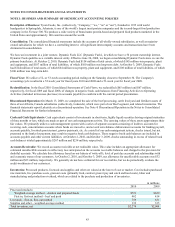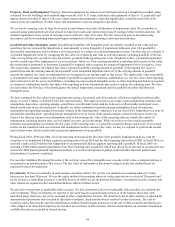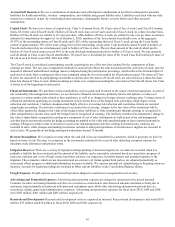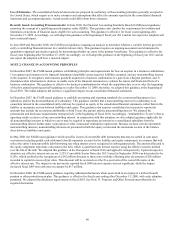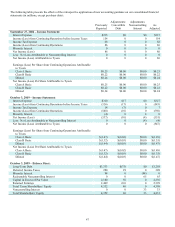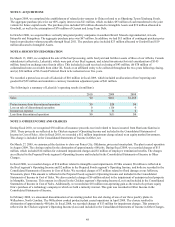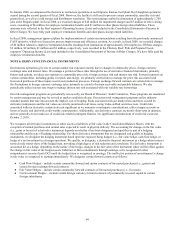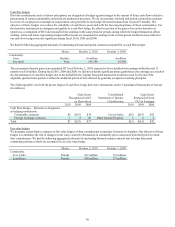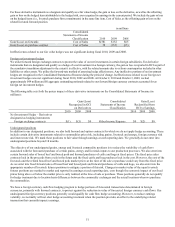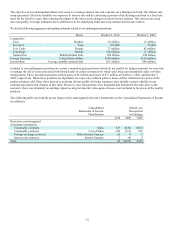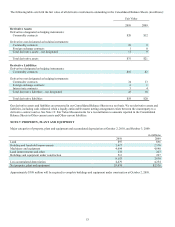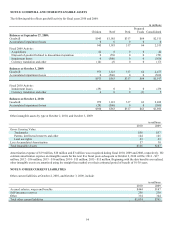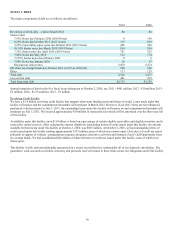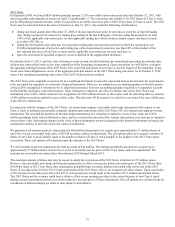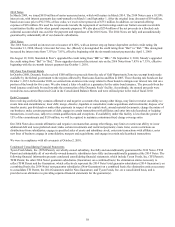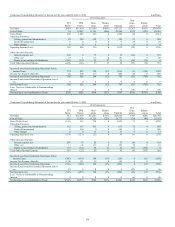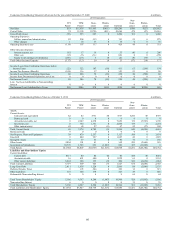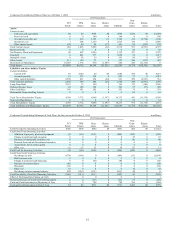Tyson Foods 2010 Annual Report Download - page 51
Download and view the complete annual report
Please find page 51 of the 2010 Tyson Foods annual report below. You can navigate through the pages in the report by either clicking on the pages listed below, or by using the keyword search tool below to find specific information within the annual report.
51
For these derivative instruments we designate and qualify as a fair value hedge, the gain or loss on the derivative, as well as the offsetting
gain or loss on the hedged item attributable to the hedged risk, are recognized in earnings in the current period. We include the gain or loss
on the hedged items (i.e., livestock purchase firm commitments) in the same line item, Cost of Sales, as the offsetting gain or loss on the
related livestock forward position.
in millions
Consolidated
Statements of Income
Classification 2010 2009 2008
Gain/(Loss) on forwards Cost of Sales $(58) $152 $65
Gain/(Loss) on purchase contract Cost of Sales 58 (152) (65)
Ineffectiveness related to our fair value hedges was not significant during fiscal 2010, 2009 and 2008.
Foreign net investment hedges
We utilize forward foreign exchange contracts to protect the value of our net investments in certain foreign subsidiaries. For derivative
instruments that are designated and qualify as a hedge of a net investment in a foreign currency, the gain or loss is reported in OCI as part of
the cumulative translation adjustment to the extent it is effective, with the related amounts due to or from counterparties included in other
liabilities or other assets. We utilize the forward-rate method of assessing hedge effectiveness. Any ineffective portions of net investment
hedges are recognized in the Consolidated Statements of Income during the period of change. Ineffectiveness related to our foreign net
investment hedges was not significant during fiscal 2010, 2009 and 2008. At October 2, 2010 and October 3, 2009, we had
approximately $49 million and $0 aggregate outstanding notionals related to our forward foreign currency contracts accounted for as
foreign net investment hedges.
The following table sets forth the pretax impact of these derivative instruments on the Consolidated Statements of Income (in
millions):
Gain/(Loss) Consolidated Gain/(Loss)
Recognized in OCI Statements of Income Reclassified from
on Derivatives Classification OCI to Earnings
2010 2009 2008 2010 2009 2008
Net Investment Hedge – Derivatives
designated as hedging instruments:
Foreign exchange contracts $(1) $(5) $0 Other Income/Expense $0 $(2) $0
Undesignated positions
In addition to our designated positions, we also hold forward and option contracts for which we do not apply hedge accounting. These
include certain derivative instruments related to commodities price risk, including grains, livestock and energy, foreign currency risk
and interest rate risk. We mark these positions to fair value through earnings at each reporting date. We generally do not enter into
undesignated positions beyond 18 months.
The objective of our undesignated grains, energy and livestock commodity positions is to reduce the variability of cash flows
associated with the forecasted purchase of certain grains, energy and livestock inputs to our production processes. We also enter into
certain forward sales of boxed beef and boxed pork and forward purchases of cattle and hogs at fixed prices. The fixed price sales
contracts lock in the proceeds from a sale in the future and the fixed cattle and hog purchases lock in the cost. However, the cost of the
livestock and the related boxed beef and boxed pork market prices at the time of the sale or purchase could vary from this fixed price.
As we enter into fixed forward sales of boxed beef and boxed pork and forward purchases of cattle and hogs, we also enter into the
appropriate number of livestock futures positions to mitigate a portion of this risk. Changes in market value of the open livestock
futures positions are marked to market and reported in earnings at each reporting date, even though the economic impact of our fixed
prices being above or below the market price is only realized at the time of sale or purchase. These positions generally do not qualify
for hedge treatment due to location basis differences between the commodity exchanges and the actual locations when we purchase
the commodities.
We have a foreign currency cash flow hedging program to hedge portions of forecasted transactions denominated in foreign
currencies, primarily with forward contracts, to protect against the reduction in value of forecasted foreign currency cash flows. Our
undesignated foreign currency positions generally would qualify for cash flow hedge accounting. However, to reduce earnings
volatility, we normally will not elect hedge accounting treatment when the position provides an offset to the underlying related
transaction that currently impacts earnings.


